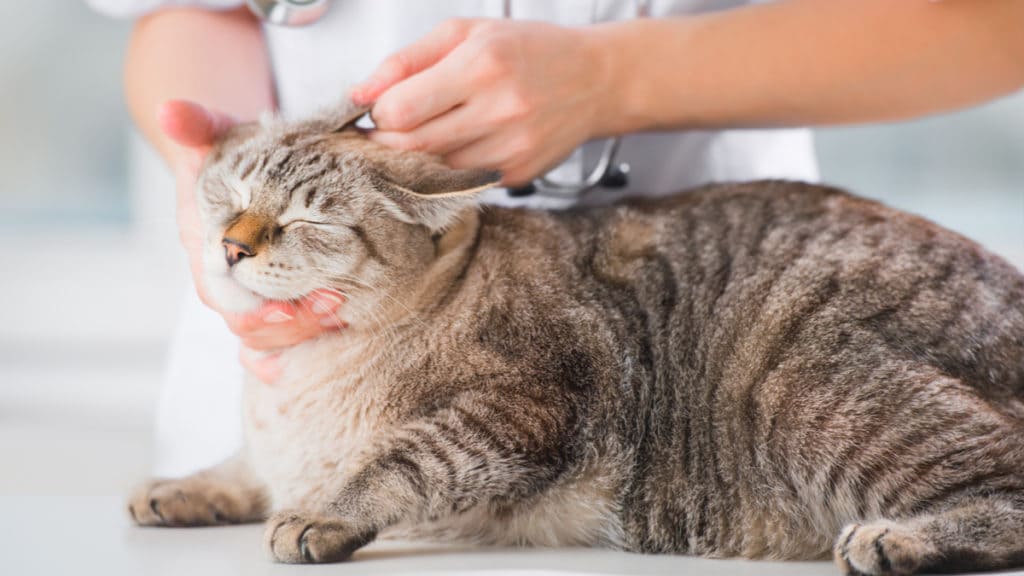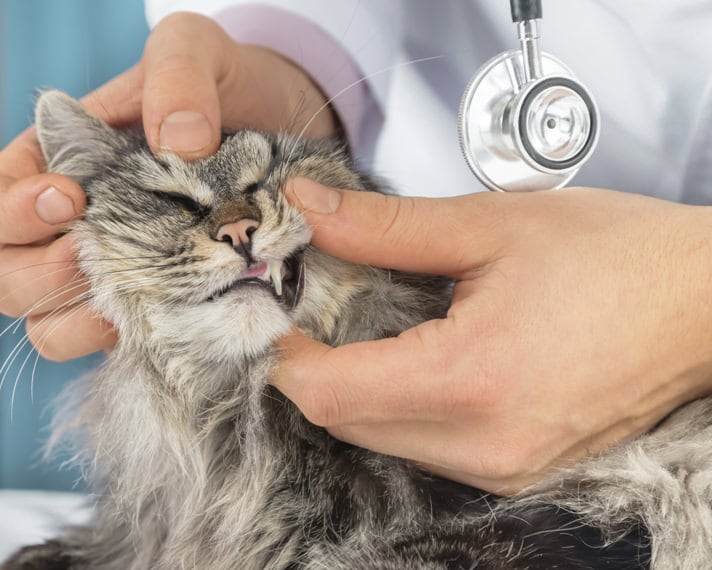You’ve Googled the symptoms and you are positive your cat has ear mites—now what? You’re in the right place if you’re wondering how to treat eat mites in cats. The first step is to understand what are ear mites and then learn your options for ear mite treatments for cats.
What Are Ear Mites in Cats?
Ear mites are tiny (as in microscopic) parasites that live in and on the ears of cats. If you look closely at your cat’s ears, you may even see them as tiny white specks, smaller than a pinpoint, moving around in your cat’s ears.
The Latin name of these critters is Otodectes, and they are highly contagious to other cats. Even dogs can contract mites from cats. Fortunately, humans appear to be immune from ear mites.
Even brief physical contact between cats is enough to spread ear mites from one cat to another. These prolific pests live about three weeks and continually reproduce, laying eggs that perpetuate the infestation.
Common Symptoms of Ear Mites in Cats
Ear mites in cats cause predictable symptoms. These symptoms include:
- Red, itchy ears
- Black ear discharge that looks like coffee grounds
- Incessant head shaking
- Incessant ear scratching
A cat infected with ear mites is miserable; some cats will scratch their ears hard enough to cause bleeding and scabbing. If left untreated, ear mite infestations can seriously damage the ear canal and lead to secondary bacterial and yeast infections.
Even if Dr. Google says your cat has ear mites, take her to a veterinarian for confirmation. Your veterinarian she will take a swab of the debris in your cat’s ear, put it on a slide and look at it under the microscope. Ear mites and their eggs are easily detectable under a microscope.
Ear Mite Treatment for Cats
Even though ear mites are a pain in the ear, they are relatively easy to treat. Ear mites in cats can be killed using over-the-counter (OTC) medicines, but read the label carefully to ensure it can be used on cats. Never use a product labeled for use in dogs on cats, and it is best to check with your veterinarian before treating your cat with ear mite medication.
Another option is to use a topical, vet-recommended ear mite treatment for cats that lists ivermectin as the primary ingredient. It is a good idea to completely clean your cat’s ears—or have them cleaned by a veterinary care team—before applying medication to the ears. Any ear cleaner will do the job.
Some tick and flea medicine for cats, including Bravecto, and Nexgard, are not labeled for mites, however they do kill ear mites. These offer an alternative, oral treatment that also protects your cat against fleas, ticks and any future ear mites infestations.
It is important to not only kill living mites, but also the mites that hatch from eggs that have been laid in the ear. This means the medication needs to last 2-3 weeks in the ear, or it needs continual reapplication. Follow all instructions carefully or the infestation will reoccur.
Sometimes, cats with ear mite infestations will have a bacterial and fungal infection in their ear as well. Ear mite treatment for cats will not clear up the infection as well. This requires prescription pet medication to clear both the mites and the infection.
NOTE: Until all the adult mites and newly hatched mites are dead, your cat is considered very contagious to other cats and dogs. Keep any cat with ear mites isolated from other pets in the household.
Wash all pet bedding, and wash your hands in between handling the infested cat and the healthy pets. Check your other pets daily for any signs of ear mite infestation, and if you notice any changes, call your veterinarian.
Take your cat back to the veterinarian 2-3 weeks after treatment for a recheck exam and ear swab. At this point, if treatment was successful, then all eggs will have hatched and all mites, if present, will be dead. Well done.
Dr. Sarah Wooten is a practicing veterinarian, certified veterinary journalist, author, speaker, landlord, tea tavern owner, mom and warrior goddess. When it is time to play, she can be found either skiing in Colorado, diving a coral reef, or triathlon training with Team LC.
Learn more about keeping your cat healthy
Share:










